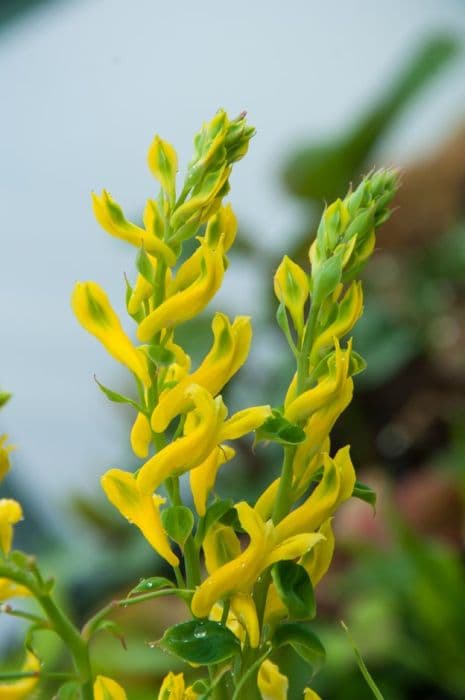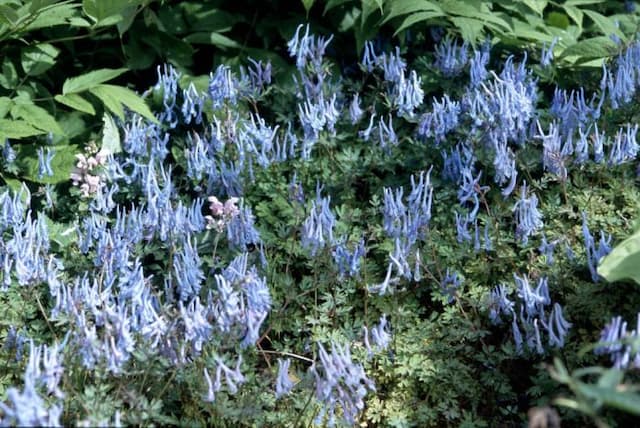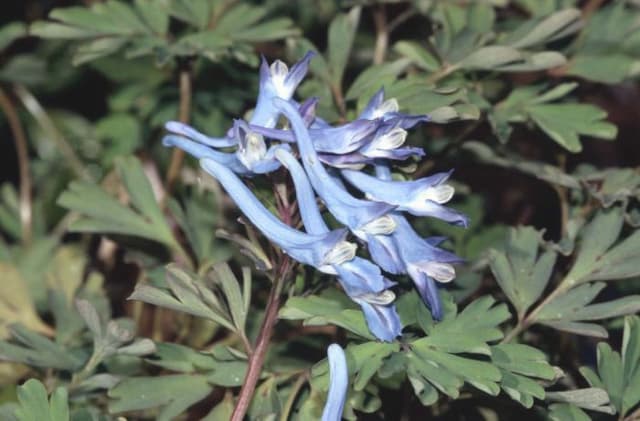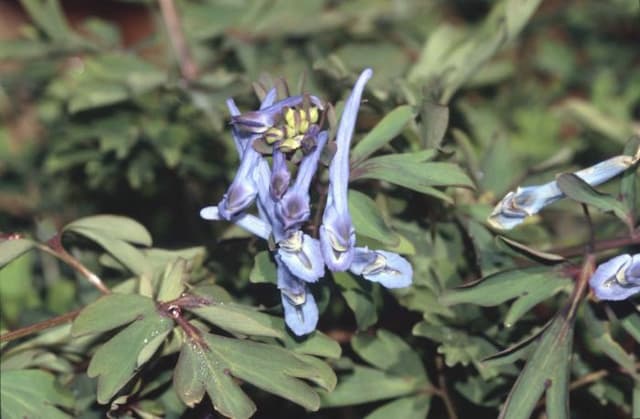Ladybird Poppy Papaver commutatum
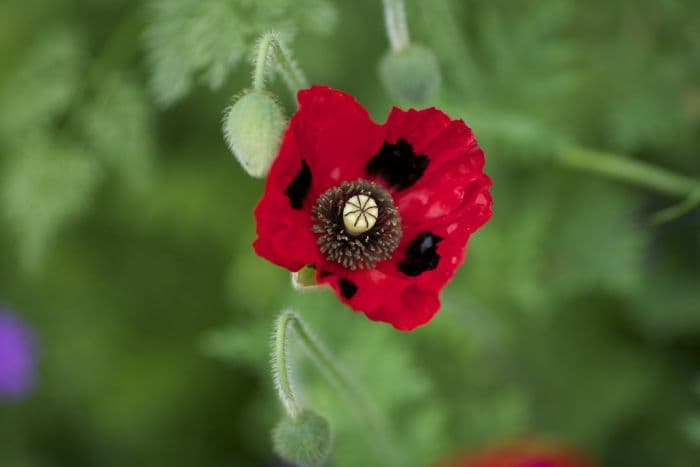
ABOUT
The plant known as Ladybird Poppy is an eye-catching floral species renowned for its distinctive appearance. It typically bears large, showy flowers with vivid red petals that are marked with an unmistakable black spot near the base, reminiscent of a ladybird, which contributes to its common name. The contrast of these spots against the bright petals creates a stunning visual impact that is easily recognized. The leaves of the Ladybird Poppy are mostly lobed or dissected, with a green to blue-green color and a somewhat hairy texture which can give them a soft or fuzzy appearance. The plant's overall form tends to be upright with a slender stem that supports the beautifully patterned blooms atop. It blooms in the warmer months, producing a captivating display that not only adds a splash of color to the environment but also attracts various pollinators seeking its nectar.
About this plant
 Names
NamesSynonyms
Ladybird Poppy, Caucasian Scarlet Poppy, Reddish Horned Poppy, Tulip Poppy.
Common names
Papaver commutatum var. caucasicum, Papaver caucasicum, Papaver umbonatum, Papaver pulvinatum, Papaver triniifolium.
 Toxicity
ToxicityTo humans
The plant Papaver commutatum, commonly known as Ladybird poppy, is not typically regarded as one of the more toxic members of the poppy family. However, all members of the Papaver genus contain alkaloids that can be potentially harmful to humans if ingested in large quantities. The Ladybird poppy is not known to be a major source of the more potent opiate alkaloids found in some other Papaver species, but it can still cause mild to moderate symptoms if consumed. The possible consequences of ingesting Ladybird poppy include gastrointestinal distress, such as nausea, vomiting, and diarrhea. In more sensitive individuals, there may be additional symptoms such as dizziness, confusion, or lethargy. It is crucial to avoid ingesting any part of this plant and to seek medical attention if ingestion occurs.
To pets
The plant Papaver commutatum, commonly known as Ladybird poppy, can also be toxic to pets if ingested. Similar to its effects on humans, the principal concern with pets consuming Ladybird poppy stems from the alkaloids present throughout the plant. Symptoms of poisoning in pets may include lethargy, changes in appetite, dilated pupils, difficulty walking, or gastrointestinal upset like vomiting and diarrhea. More severe cases could potentially lead to respiratory depression or central nervous system depression. If you suspect your pet has ingested any part of a Ladybird poppy, it is imperative to contact a veterinarian immediately.
 Characteristics
CharacteristicsLife cycle
Annuals
Foliage type
Deciduous
Color of leaves
Green
Flower color
Red
Height
1-2 feet (30-60 cm)
Spread
1 feet (30 cm)
Plant type
Herb
Hardiness zones
8
Native area
Caucasus
Benefits
 General Benefits
General Benefits- Ornamental Value: Papaver commutatum, commonly known as Ladybird poppy, is appreciated for its striking red flowers with black spots, which add color and visual interest to gardens.
- Attracts Pollinators: The flowers provide nectar and pollen for bees and other beneficial insects, playing a role in supporting local ecosystems.
- Drought Tolerance: Once established, Ladybird poppy exhibits a good degree of drought tolerance, making it suitable for xeriscaping and low-water-use gardens.
- Easy to Grow: This plant is relatively easy to cultivate, which is ideal for beginner gardeners or those looking for low-maintenance garden choices.
- Self-seeding Capability: Ladybird poppy can self-seed under the right conditions, which can lead to natural propagation and reduced need for manual replanting year after year.
- Soil Improvement: As a member of the poppy family, it can help improve soil structure when added to garden beds or borders.
- Erosion Control: Its root system can help stabilize soil and prevent erosion, especially on slopes or in areas susceptible to wind or water runoff.
- Seasonal Interest: Ladybird poppy provides seasonal interest with its distinct blooming period in the spring or early summer.
- Companion Planting: This plant can be used in companion planting to create aesthetically pleasing combinations or to create habitat diversity in the garden.
- Ecological Support: Serving as a food plant for the larvae of some butterfly and moth species, it contributes to the life cycle of these insects and overall biodiversity.
 Medical Properties
Medical PropertiesThis plant is not used for medical purposes.
 Air-purifying Qualities
Air-purifying QualitiesThis plant is not specifically known for air purifying qualities.
 Other Uses
Other Uses- Papaver commutatum, commonly known as the 'Ladybird Poppy', can be used in dye production, as the bright red color of its petals has historically been used to create natural dyes for fabrics.
- The seed pods of the Ladybird Poppy can be dried and used in floral arrangements to add an interesting visual texture and shape.
- Pressed Ladybird Poppy flowers are commonly used in crafts and for making bookmarks or greeting cards, thanks to their vibrant petals and distinctive black spots.
- In vegetable gardens, Ladybird Poppies can serve as decoy plants, perhaps distracting pests from more valuable crops with their conspicuous petals.
- The stems and leaves of the Ladybird Poppy can be used in the art of plant rubbing, where their textures are transferred onto paper to create unique pieces of art.
- Ladybird Poppy petals can be used in potpourri mixtures, contributing a colorful aspect to the blend as well as a subtle, herbaceous scent when dried.
- As a photographer's subject, the Ladybird Poppy offers a striking combination of colors and forms for artistic photography projects, especially macro photography due to their intricate detail.
- The Ladybird Poppy can be a vibrant addition to educational projects and plant studies, helping students learn about pollinators and the life cycle of flowering plants.
- Ladybird Poppy seeds contain oil that could theoretically be used in low-yield oil extraction for experimental purposes or in crafting homemade natural oils for various artisanal uses.
- When planting Ladybird Poppies, their tendency to self-seed can be utilized for naturalizing areas of the garden, creating a wildflower-like display with little additional effort from the gardener.
Interesting Facts
 Feng Shui
Feng ShuiThe Ladybird poppy is not used in Feng Shui practice.
 Zodiac Sign Compitability
Zodiac Sign CompitabilityThe Ladybird poppy is not used in astrology practice.
 Plant Symbolism
Plant Symbolism- Remembrance: Papaver commutatum, known as the Ladybird Poppy, often symbolizes remembrance, especially in relation to soldiers who have died during wartime. It is associated with Memorial Day in the United States and Remembrance Day in Commonwealth countries.
- Peace: The Ladybird Poppy can also symbolize a desire for peace, echoing the famous poem "In Flanders Fields," where poppies grow on soldiers' graves.
- Rest and Recovery: As a member of the Papaver family, which includes the opium poppy, the Ladybird Poppy is sometimes associated with sleep, rest, and recovery due to the sedative properties found in some species.
- Resilience and Hope: The Ladybird Poppy's ability to bloom in disturbed soil lends it as a symbol for resilience and emerging hope following difficult circumstances or turmoil.
 Water
WaterLadybird poppy requires regular watering, especially during dry periods, to keep the soil evenly moist. Water deeply once a week, providing about 1 inch of water which translates roughly to 0.6 gallons per square yard of soil. During particularly hot or windy weather, check the top inch of soil for dryness and water additionally if needed. Avoid overhead watering to prevent fungal diseases. In the fall, as the plant prepares for dormancy, reduce watering to allow the plant to harden off.
 Light
LightLadybird poppies thrive best in full sunlight, where they can receive at least 6 to 8 hours of direct sunlight per day. They can tolerate partial shade, but too much shade can lead to weak stems and fewer blooms. Choose a location that is exposed to the early morning sun, as this helps to quickly dry dew from the leaves, reducing the risk of fungal diseases.
 Temperature
TemperatureLadybird poppies prefer cooler temperatures and can perform well in areas with spring temperatures between 60°F and 70°F. They can tolerate a range from a low of about 20°F to a high of about 85°F. To set robust roots and for optimal growth, maintain the environment around the ideal temperature range. Avoid exposing the plant to extremes, as both frost and excessive heat can be detrimental to its health.
 Pruning
PruningPruning ladybird poppies is essential to encourage a second bloom and maintain a tidy appearance. Deadhead spent flowers regularly to prevent the plant from setting seed too early in the season. Cut back the foliage to the ground in the fall after the plant has died back completely. This pruning should occur once flowering has ceased or when the foliage begins to yellow, typically in late summer or early autumn.
 Cleaning
CleaningAs needed
 Soil
SoilLadybird poppy thrives in well-draining, sandy or loamy soil with a pH between 6.0 and 7.5. A mix of two parts garden soil, one part sand, and one part peat or compost works well to nourish the plants and ensure adequate drainage. Regular soil testing can help maintain optimal pH levels.
 Repotting
RepottingLadybird poppies are typically grown as annuals, so they do not often require repotting. If started indoors, they should be transplanted outside after the danger of frost has passed. When grown in containers, repotting may be necessary every spring.
 Humidity & Misting
Humidity & MistingLadybird poppies prefer a relatively dry climate and do not need high humidity to thrive. They are tolerant of average ambient humidity levels and should not be exposed to overly humid conditions, which could promote fungal diseases.
 Suitable locations
Suitable locationsIndoor
Place ladybird poppy by a sunny window and ensure good airflow.
Outdoor
Plant ladybird poppy in full sun with well-draining soil.
Hardiness zone
3-9 USDA
 Life cycle
Life cyclePapaver commutatum, commonly known as Ladybird Poppy, begins its life cycle when seeds germinate in cool, moist soil, typically in spring or fall. Emerging seedlings establish a rosette of leaves low to the ground as they mature in preparation for flowering. Upon reaching maturity, the plant sends up stalks which bear distinctive red flowers with black spots, akin to a ladybird, hence the name. The flowers then are pollinated, most often by bees, and following pollination, they produce seed pods. These pods eventually dry out and release their seeds back into the soil, completing the cycle. The plant is an annual, so it completes this entire process within one growing season, from germination to seed production.
 Propogation
PropogationPropogation time
Spring to early summer
The Papaver commutatum, commonly known as Ladybird poppy, is often propagated by seed. The best time to sow Ladybird poppy seeds is in early spring directly into the garden where soil temperatures have reached about 60°F (15.6°C). You can also start them indoors before the last frost date. To propagate by seed, simply scatter the seeds onto prepared soil where you wish to see them grow. It is not necessary to cover the seeds with soil; however, a light dusting can help retain moisture. Maintain the soil's moisture until germination, which typically occurs within 14-21 days. Once seedlings have developed a few true leaves, they can be thinned out to avoid overcrowding.
